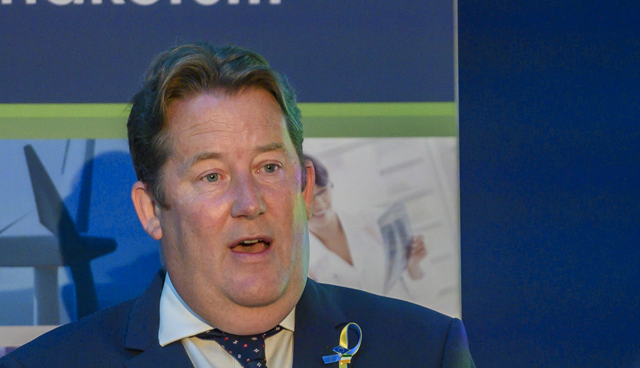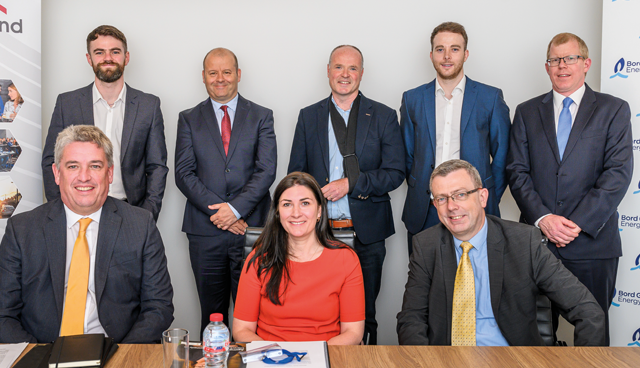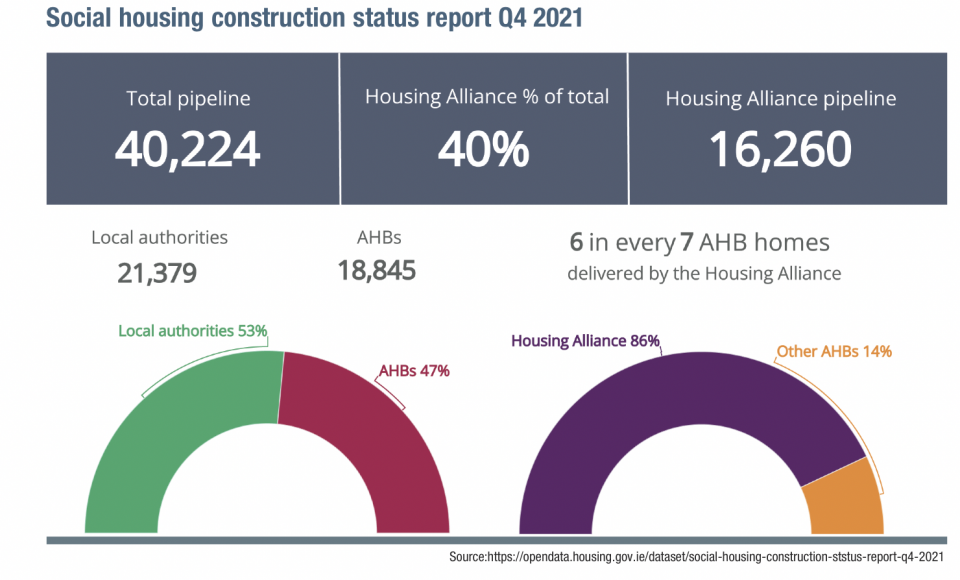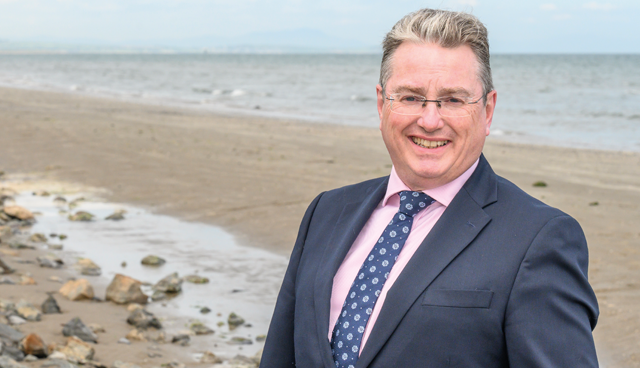
COVER: A powerhouse of delivery
4th July 2022
Foreword: The common goal of Housing for All
7th July 2022Housing Minister Darragh O’Brien: Delivering Housing for All
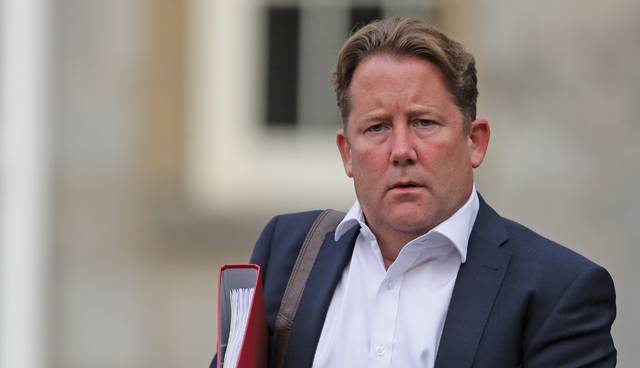
At a time of great uncertainty, with pressures such as inflation at home and the repercussions of the Russian invasion of Ukraine abroad, having a consistent housing plan is more important than ever, writes Minister for Housing Darragh O’Brien TD.
Housing for All offers us this consistency. It is a fully targeted, fully funded plan. The Government and I will continue to implement it as we respond appropriately and compassionately to the plight of Ukrainian refugees arriving in Ireland.
“For renters, supply is critical to making housing more affordable.”
Firstly, what is our aim? That everyone should have access to a home to purchase or rent at an affordable price, built to a high standard and in the right place, offering a high quality of life. We are backing this with a guaranteed over €4 billion a year in housing investment and a series of actions to deliver 300,000 new homes by 2030. This includes 90,000 social homes and 54,000 affordable homes. While I know it might be very hard for people to see, the plan is already working with home permissions, commencements, completions, purchases, and mortgage drawdowns all up to record levels.
Latest CSO figures show planning permissions for homes were up 22.7 per cent in the year ending Q1 2022 (44,491) when compared to the same time period to Q1 2021 (36,252). There were 34,846 units commenced in the year to March 2022, the highest number of commencements since records started in 2014. When it comes to completions, in the EU, Ireland has gone from the third lowest level of completions per capita in 2013 to the fifth highest in 2020 and I expect that trend to continue. The number of homes purchased by households has gone from a low of just under 25,699 in 2011 to 55,298 in 2021, and first-time buyers have reached their highest levels since 2007 with over 15,065 buying properties in the year to March 2022. This is up from a low of 6,381 in 2011, a massive 136 per cent increase.
For the plan to succeed, Housing for All’s 213 actions need to be implemented. One-hundred-and-thirty-five have now either been completed or are being delivered on an ongoing basis. These include measures to support the capacity of both the public and private sectors to deliver on the plan’s ambitions and to address critical enabling factors. They include the availability of land, access to the required levels of development financing and the timely provision of utilities including water, electricity, and broadband, and fundamental reform of the planning process.
For first-time buyers, we are starting to see Local Authority Affordable Purchase Scheme homes come on stream. Homes ranging from €166,000 to €245,000 are being made available in 2022 through developments in Fingal, Cork, and south County Dublin. More will follow. We have introduced a new Local Authority Home Loan, which is more accessible for single applicants. We have also introduced an owner-occupier guarantee which we know has resulted in almost 16,000 homes being ring-fenced for homeowners and restricted from bulk buying or multiple sales to a single purchaser. The First Home Scheme will be available from July 2022. Through the scheme, the first of its kind in Ireland, the Government and participating banks will help first-time buyers bridge the gap between the finance they have and need to purchase their own home.
For renters, supply is critical to making housing more affordable. The indicators I have outlined will help. We have capped any possible rent increase to a maximum of 2 per cent per annum and have made tenancies of indefinite duration a reality. Cost rental homes, in which the rent level is equal to the cost of building, managing, and maintaining the home, is scaling up. Tenants are now living in cost rental homes in Leixlip, Balbriggan, and Enniskerry Road, paying rents that are between 30 per cent and 50 per cent below the local market rents.
Our social housing pipeline is very strong. As we move away from leasing homes to provide new build social homes, this year we aim to deliver 9,000 new-build homes. To enable more delivery, I have approved over 200 new staff for local authority housing delivery teams across the country and 24 additional posts for An Bord Pleanála. We’ve reformed the Mortgage to Rent Scheme to make the scheme more accessible for those at risk of losing their homes. In December 2022, the Government launched the Housing First National Implementation Plan, one of the key responses in ending long-term homelessness among those with complex health and mental health needs. The plan will create 1,319 new tenancies for long-term homeless by 2026. My department is currently developing a new youth homelessness strategy.
“Implementing Housing for All, exceeding our targets where possible, is my top priority.”
We have already ended the SHD process and returned decision making to our local authorities. The Department of Finance have legislated for a zoned land tax, and they are also gathering data with a view to introducing a vacant property tax in this year’s budget. The Attorney General and his team are working on the most significant reform to planning legislation in Ireland and this will be complete in September.
Addressing vacancy, by making the best use of our existing stock, is crucial. In February 2022, the Government launched a new town centre first policy. It promotes residential occupancy in rural towns and villages. It will help town centres become viable, vibrant, and attractive locations in which to live and work and visit.
To meet a family as they move into their forever home, having spent years on a social housing waiting list; to talk to a person who has experienced long-term homelessness but is now in a Housing First tenancy; to speak with tenants in our latest cost rental developments – these are among the most fulfilling moments of the job. For every person I meet there are thousands more who need and want the same. Implementing Housing for All, exceeding our targets where possible, is my top priority.

